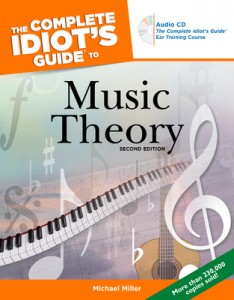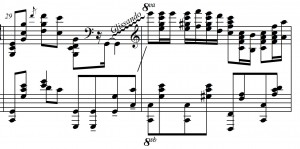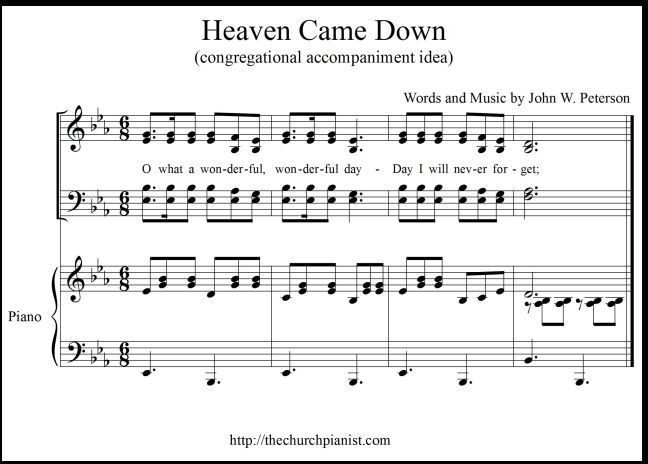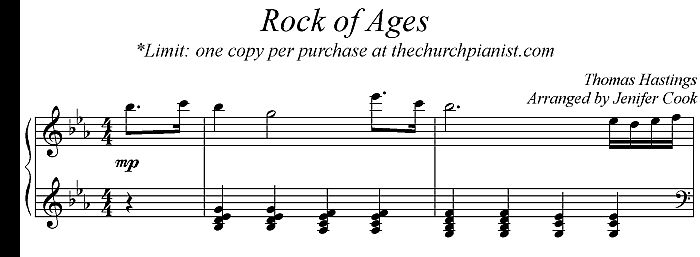Now don’t get offended with the title of this music theory book…I use it as a reference book for my piano teaching and composing. The title…“The Complete Idiot’s Guide to Music Theory”.

The description on the front cover of this book gives an excellent overview:
“Essential information on reading and writing—including basic notes, rhythms and scales”
“Helpful hints on creating your own melodies, chords and harmonies”
“Audio exercises (CD included) to develop your ear training skills”
My favorite chapter in the Complete Idiot’s Guide to Music Theory deals with chords…(chapter 9). This chapter gives the reader an overview of the basic types of chords used in today’s music.
For example…the basic types of chords mentioned in this chapter include the following: Major, minor, diminished and augmented. The chapter then goes into “chord extensions”…my favorite section! Oh, and the “power” chords are interesting too 🙂
There is a complete chord appendix in the back of the book that covers every kind of chord–in every key! The writer of this book says to use this appendix when you want to write a chord but don’t know how.
List of the Appendixes
A. The Complete Idiot’s Music Glossary
B. The Complete Idiot’s Chord Reference
C. Answers to Chapter Exercises
D. The Complete Idiot’s Guide to Music Theory, Second Edition, Ear Training Course CD
Click on following link to view a sample chapter of this book:
Complete Idiot’s Guide to Music Theory
You may purchase the book at the above link or try to find on Ebay or Amazon for a more reasonable price. (make sure the CD is included)






